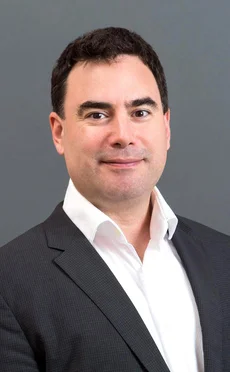
This article was paid for by a contributing third party.More Information.
Four key questions financial institutions should be asking their technology partners

Resilience is a critical characteristic of financial systems. There will always be difficulties, just like there will always be another crisis. There are four questions that we think financial institutions should be asking of their technology partners to ensure their systems are resilient: is your solution integrated, future-proof, focused and transparent? By Mark Higgins
Is your platform integrated?
An integrated platform means you can change a piece of data or functionality once, and have that change applied everywhere across the business. The opposite of integrated is siloed – lots of different point solutions in different parts of the business, with data and functionality duplicated over and over. A classic point solution is spreadsheets: often a quick way to solve a problem, they become fragile and disconnected as they are modified and multiplied over time. Siloed solutions can slow down your business and introduce data discrepancies as changes need to be copied to dozens or hundreds of different implementations. Ask yourself and your vendors, how quickly can you add a new business, data source or market model without creating a new silo?
Is your system future-proof?

This is a tough one for an industry that has a long history of planned and unplanned obsolescence. Future-proof does not mean the system you buy today will still be operational in 20 years. Future-proof systems are not defined by the core hardware architecture or the language in which they are written. Instead, they are measured by the speed and agility of installing updates, adding new functionality or adapting to changes in infrastructure. Legacy systems with infrequent updates – which clients often skip because they have to carefully evaluate each one in an expensive and time-consuming process – lead to security risks and missing out on useful functionality. Future-proof systems are highly modular, with continuous deployment of updates and incremental new functionality, backed by extensive automated testing.
After 20 years, almost everything may have been upgraded, replaced or enhanced, but without significant disruption. Ask how quickly you or your vendor can update a function that affects everything in the stack, swap out to a newly developed and more powerful infrastructure component or adapt to an emerging opportunity. Weeks or even days is too long in fast-moving financial markets.
Is your solution focused?
When Kirat Singh, co-founder and CEO of Beacon Platform, and I started working at big banks in the 1990s, most of the technology was relatively simple and not available for purchase as components, so it made sense to build everything top to bottom, in-house. Technology systems now are so complex that it is difficult or impossible for your organisation to be an expert in the entire stack. And you do not need to be. Your competitive edge comes from focusing development resources within your area of expertise at the very top of these technology stacks.
There is little or no competitive advantage available in building your own version of complex but relatively commoditised foundational systems. Cloud-compute infrastructure, data warehouse interfaces, integrated development environments, web application frameworks, workflow automation, and even many visualisation, trading and risk management functions are either too complex to match-in house or commoditised enough that you shouldn’t need to. Ask how much work is generated when a business moves from thousands to millions of trades per day, when new web browser functionality becomes available, or when you want to ingest new market data?
Is your technology transparent?
Finally, for both governance and crisis response, nothing should operate as a black box. You should be able to effectively monitor everything, set appropriate alerts for early warnings that something is overheating and open the hood to see how everything works. This means real-time dashboards, detailed reporting, and analytics for all of the operating components. It means modern version control and release management, so that changes are code-reviewed, tested and then consistently released to the appropriate targets. It means ready availability of the vendor’s source code, so you can dig deep enough to understand how things work. And it means appropriate ownership of the full stack so you can make changes and enhancements based on your expertise and intellectual property. Ask vendors what you can see, what you own and how your data and intellectual property is protected.
Getting the best results from your technology partners
Today’s businesses are so dependent on technology that they need to work with effective partners, not just a collection of products. An excellent technology partner understands enough of your business to speak your language, be aware of your pain points and recommend appropriate solutions. An excellent platform delivers the necessary foundation and fundamentals so you can focus on your business. When finance developers spend the majority of their time on real business problems and competitive opportunities instead of the underlying technology, they deliver better results, faster. That means a faster response to emerging market opportunities, new investment strategies and risk profiles, and increased returns.
To learn more
For more information or to schedule a demo, email info@beacon.io
Sponsored content
Copyright Infopro Digital Limited. All rights reserved.
You may share this content using our article tools. Printing this content is for the sole use of the Authorised User (named subscriber), as outlined in our terms and conditions - https://www.infopro-insight.com/terms-conditions/insight-subscriptions/
If you would like to purchase additional rights please email info@risk.net
Copyright Infopro Digital Limited. All rights reserved.
You may share this content using our article tools. Copying this content is for the sole use of the Authorised User (named subscriber), as outlined in our terms and conditions - https://www.infopro-insight.com/terms-conditions/insight-subscriptions/
If you would like to purchase additional rights please email info@risk.net